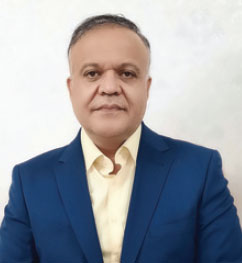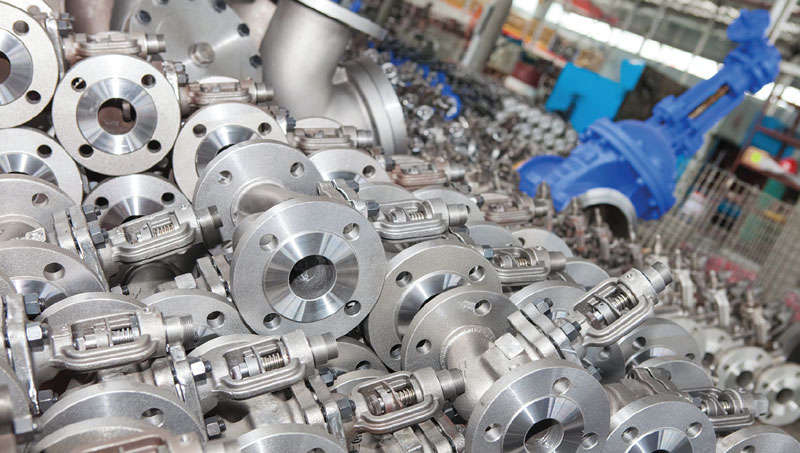AM plan for valve manufacturing
By Mr. Alireza Aslarabi Sardroudi
In parts 1 and 2 of his column, Mr. Alireza Aslarabi Sardroudi has first outlined the issue of asset management in the field of industrial valves and addressed the requirements of an asset management system. In part 3, he turns his attention to issues during manufacturing which can reduce design costs, increase the accuracy of life estimation and reduce design errors.
In the previous articles, we defined the duration of an asset and its outlines. These outlines are generally taken from the content of knowledge that has been published in the world in recent years. But using them and applying them for different assets and a certain time of their life cycle is not an easy task and requires special experience in the field of those assets. We know that the goal of asset management is to optimize three components for each asset, namely efficiency, risk and cost. However, due to the current high energy needs, a fourth part has been added under the title of energy optimization.
The life cycle of an asset begins with its manufacturing, selection, installation and commissioning, continues with its operation and maintenance, and ends with its removal or demolition. All these stages are very important but in my opinion and in the opinion of many experts, the manufacturing period can have a particularly profound impact – both positive or negative – on all the steps that follow. In other words, if an asset is properly designed and built, the end user will have fewer problems during operation and maintenance and the asset will deliver a longer service life.
Construction issues
Generally, points that industrial valve manufacturers consider when constructing valves are those which answer end-users’ demands for features such as: ease of operation, durability, greater efficiency, minimum safety hazards, easy maintenance, reduced depreciation and repair, and longer service life. Low cost and low energy consumption throughout the lifetime of the valve are also important. These demands are logical, but what issues must be observed during manufacture to fulfill them?
The minimum requirements of an asset management program for the construction of industrial valves will include the following:
- Reliability centered design (RCD):
- This approach has been considered by manufacturers for several years, along with the development of asset management standards throughout the world. In a general definition, reverse reliability is risk, and if we want to know the reliability of the design, we must first list the risks. We usually do not have a direct risk in design, but we can prevent future risks during operation and maintenance. In the design approach based on reliability, operational items can include issues such as ease of operation, speed of operation for opening and closing, the possibility of internal and external cleaning, performance testing before commissioning and during operation and the possibility of isolation of safety and safety equipment control valves. All these can be reduced with appropriate designs. In terms of maintenance, there are risks of disabling breakdowns, recurring breakdowns, safety hazards, failure to repair after each breakdown at the right time MTTR (mean time to repair) and short intervals between breakdowns MTBF (mean time between failure), high consumption of spare parts and consumption, the need for specialist skills and tools for maintenance and repair, damage to the environment, weather and related fluids, etc. All these issues should be considered such that the manufacturer can design a valve whereby these risks are reduced.
- Importantly, all the issues mentioned above are reflected in the RAMS (reliability, availability, maintainability & safety), and the amount can be determined during the design phase enabling a valve to be built based on that. In a special asset management program, the design and construction of an industrial valve in a RAMS engineering model designed in accordance with its relevant indicators and recognizing the components of these indicators has a high priority.
- The RAMS model also addresses risks in the field of disposal, including the possibility of non-disposal with major repairs; environmental compatibility of materials removed or returns to the factory and reuse.
- Optimal energy dissipation design:
- An important part of energy losses in industries is caused by valves, which usually occurs from three factors: leakage, body heat exchange with ambient air and high power consumption required to control the valve (especially for motor valves). Manufacturers today in various industries try to achieve energy index (A) and above. This would also be beneficial for valves but has not yet become widespread practice.
- At the time of design, the valves are engineered to have less energy consumption with high performance efficiency. The valves are made of special materials with lower thermal conductivity, bodies and accessories are fitted with insulating covers, and leak-proof components are specified.
- Designing a specific life cycle:
- Manufacturers today can use reliability data to determine a specific life for a valve and design and build a valve based on that. Observing the requirements of the designed useful life during operation can reduce exploitation, maintenance and removal costs are effective and the return on investment process for end users is accelerated and high productivity is guaranteed.
Conclusion
Manufacturers of industrial valves would do well to use the asset management model whilst manufacturing valves. The majority of these design measures are based on reliability, optimal energy efficiency design and design of a specific life cycle with a defined cost; such measures can increase efficiency, reduce risk, optimize energy consumption and ultimately improve life cycle costs. But realizing this requires a lot of data from records in various industries, special software, reliability specialists and an asset management system.
It is predicted that in the near future and in line with the fourth industrial age (4.0) these issues will be easier thanks to artificial intelligence. The behavior of the valve during the hypothetical life cycle can be determined using big data and simulation analyzes and reviewed, optimized and even tested during the design phase.
This will be effective in reducing design costs, increasing the accuracy of life estimation and reducing design errors for the period of operation and maintenance, and will achieve optimal use of resources.
To be continued…….
 About the author
About the author
Mr. Alireza Aslarabi Sardroudi is an expert In physical asset management. Based in Tehran, Iran, Mr. Sardroudi can be reached on: aslearabi@yahoo.com
Mr. Sardroudi has planned seven articles about asset management of valves, as follows:
1: Introduction and overview
2: Requirements of an asset management system for valves
3: Asset management plan for the manufacture of valves
4: Asset management plan for engineering, design and installation
5: Asset management plan for valves during operation
6: Asset management plan for decommissioning valves
7: Valve asset management assessment and auditing


